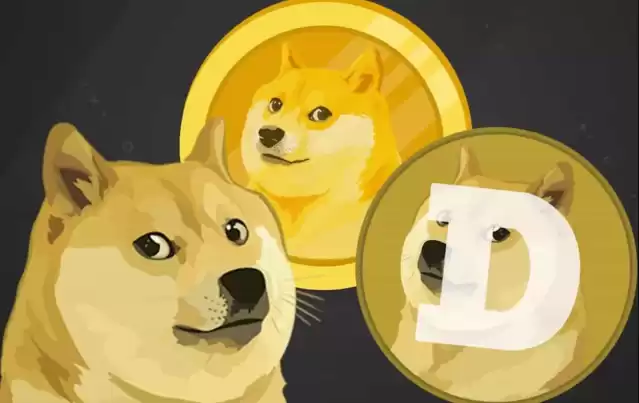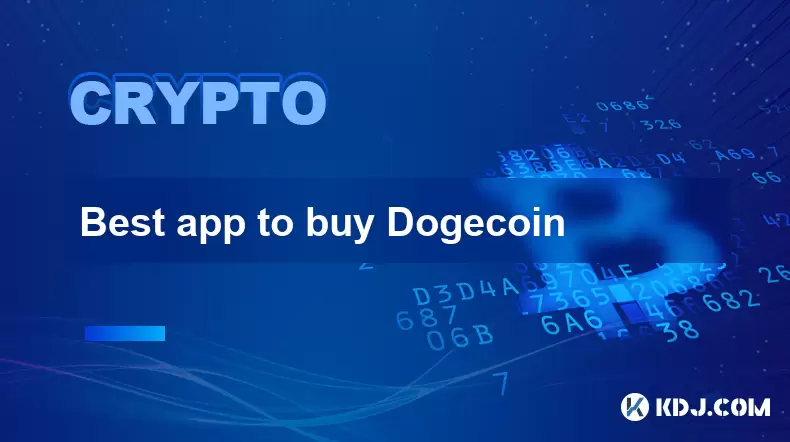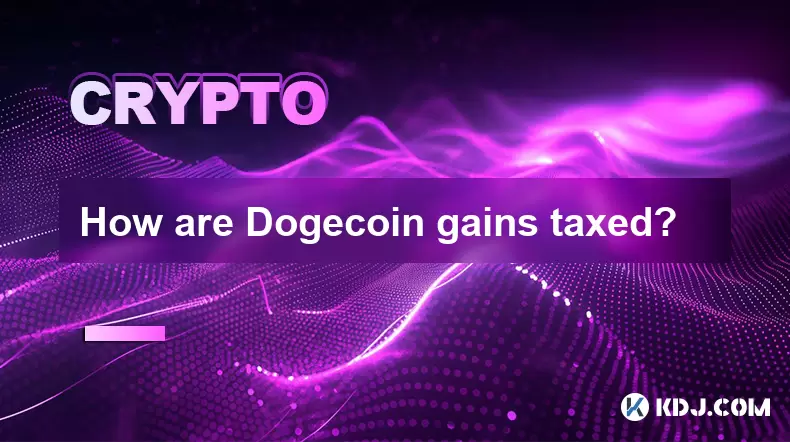-
 Bitcoin
Bitcoin $118000
0.67% -
 Ethereum
Ethereum $3750
0.71% -
 XRP
XRP $3.183
1.61% -
 Tether USDt
Tether USDt $1.000
-0.01% -
 BNB
BNB $788.1
1.21% -
 Solana
Solana $186.0
0.85% -
 USDC
USDC $0.9999
-0.02% -
 Dogecoin
Dogecoin $0.2373
1.25% -
 TRON
TRON $0.3204
1.76% -
 Cardano
Cardano $0.8266
1.85% -
 Hyperliquid
Hyperliquid $44.04
1.28% -
 Sui
Sui $4.192
5.88% -
 Stellar
Stellar $0.4399
2.63% -
 Chainlink
Chainlink $18.40
1.19% -
 Hedera
Hedera $0.2842
9.06% -
 Bitcoin Cash
Bitcoin Cash $560.5
2.46% -
 Avalanche
Avalanche $24.99
4.58% -
 Litecoin
Litecoin $114.5
1.25% -
 UNUS SED LEO
UNUS SED LEO $8.980
-0.03% -
 Shiba Inu
Shiba Inu $0.00001406
0.53% -
 Toncoin
Toncoin $3.306
4.27% -
 Ethena USDe
Ethena USDe $1.001
0.03% -
 Polkadot
Polkadot $4.169
2.37% -
 Uniswap
Uniswap $10.56
1.95% -
 Monero
Monero $322.8
1.06% -
 Dai
Dai $0.0000
0.00% -
 Bitget Token
Bitget Token $4.545
0.12% -
 Pepe
Pepe $0.00001261
1.29% -
 Aave
Aave $296.5
1.27% -
 Cronos
Cronos $0.1379
5.90%
does dogecoin follow bitcoin
Dogecoin's price follows Bitcoin's general trends, but its independent influencing factors cause varying correlation strengths over time.
Oct 14, 2024 at 06:42 am

Does Dogecoin Follow Bitcoin?
To understand the relationship between Dogecoin and Bitcoin, let's first look at the evolution of Dogecoin:
- Creation (2013): Dogecoin was created as a joke by software engineers Billy Markus and Jackson Palmer in December 2013. It was initially based on the "doge" internet meme, featuring a Shiba Inu dog.
- Rapid Popularity: Despite its satirical nature, Dogecoin quickly gained popularity due to its playful and approachable image. Its low price and accessible mining process appealed to a broader audience.
- Relationship with Bitcoin: Dogecoin's price has historically been linked to Bitcoin's price movements. However, this correlation has varied in strength over time.
Factors Influencing Dogecoin's Price in Relation to Bitcoin:
- Market Sentiment: Positive or negative sentiment surrounding Bitcoin can spill over to altcoins like Dogecoin. When Bitcoin gains momentum, it often leads to increased demand for other cryptocurrencies, including Dogecoin.
- Speculation and Hype: Dogecoin has a strong social media presence and community. Speculative trading based on hype and social media trends can influence its price. If investors perceive potential gains from Dogecoin, they may purchase it.
- Elon Musk's Influence: Elon Musk, CEO of Tesla and SpaceX, has been a vocal supporter of Dogecoin and frequently tweets about it. His tweets have influenced Dogecoin's price on several occasions.
- Supply and Demand: Dogecoin has a limited supply of coins, similar to Bitcoin. This factor can impact its price if demand increases relative to the available supply.
Correlation Analysis:
Statistical analysis shows that the correlation between Dogecoin's price and Bitcoin's price has fluctuated over time. According to data from TradingView:
- 2018-2019: Dogecoin's price closely mirrored Bitcoin's price, with a correlation coefficient of 0.95 during this period.
- Mid-2020: The correlation weakened, with a coefficient of around 0.6.
- Late 2020 to Mid-2021: The correlation strengthened again, with a coefficient above 0.8.
- Early 2022: The correlation once more weakened, trending around 0.5.
Conclusion:
Dogecoin's price does show some correlation to Bitcoin's price movements, but the strength of this correlation can vary. Factors such as market sentiment, speculation, social media influence, and supply and demand play a role in shaping Dogecoin's price. While Dogecoin may follow general trends in the cryptocurrency market, it is important to note that its price can move independently and is influenced by a unique set of factors.
Disclaimer:info@kdj.com
The information provided is not trading advice. kdj.com does not assume any responsibility for any investments made based on the information provided in this article. Cryptocurrencies are highly volatile and it is highly recommended that you invest with caution after thorough research!
If you believe that the content used on this website infringes your copyright, please contact us immediately (info@kdj.com) and we will delete it promptly.
- Tron ETF, Staking Rewards, and Institutional Capital: A New Era for TRX?
- 2025-07-27 12:50:13
- Bitcoin Reserves, Price, and Hyper Up: Riding the Crypto Wave to $1M?
- 2025-07-27 12:55:12
- Smart Money Moves: Wallet Withdrawal, SPX Accumulation, and What It All Means
- 2025-07-27 12:30:12
- Ethereum, Justin Sun, and Market Speculation: A Crypto Cocktail
- 2025-07-27 12:30:12
- Meme Coins in July 2025: Bitcoin Takes a Backseat?
- 2025-07-27 10:30:12
- HIFI Price Eyes Breakout: Downtrend Line in the Crosshairs?
- 2025-07-27 10:30:12
Related knowledge

Bitcoincoin burning mechanism
Jul 20,2025 at 09:21pm
What is the Dogecoin burning mechanism?The Dogecoin burning mechanism refers to the process of permanently removing DOGE tokens from circulation by se...

How to earn free Bitcoincoin?
Jul 19,2025 at 10:08pm
What is Dogecoin and Why Earn It?Dogecoin (DOGE) started as a meme-based cryptocurrency in 2013 but has grown into a widely recognized digital asset. ...

Is Coinbase a good wallet for Bitcoincoin?
Jul 19,2025 at 04:42pm
Understanding Coinbase as a Wallet Option for DogecoinWhen considering where to store Dogecoin, Coinbase is often mentioned as a potential option due ...

How to buy Bitcoincoin with PayPal?
Jul 23,2025 at 06:57am
Understanding the Basics of Buying DogecoinBefore diving into the process of buying Dogecoin with PayPal, it’s essential to understand what Dogecoin i...

Best app to buy Dogecoin
Jul 23,2025 at 03:08pm
What Is a Cryptocurrency Exchange and How Does It Work?A cryptocurrency exchange is a digital marketplace where users can buy, sell, or trade cryptocu...

How are Dogecoin gains taxed?
Jul 25,2025 at 07:01am
Understanding the Taxation of Dogecoin GainsWhen it comes to Dogecoin (DOGE), many investors are drawn to its meme-inspired branding and volatile pric...

Bitcoincoin burning mechanism
Jul 20,2025 at 09:21pm
What is the Dogecoin burning mechanism?The Dogecoin burning mechanism refers to the process of permanently removing DOGE tokens from circulation by se...

How to earn free Bitcoincoin?
Jul 19,2025 at 10:08pm
What is Dogecoin and Why Earn It?Dogecoin (DOGE) started as a meme-based cryptocurrency in 2013 but has grown into a widely recognized digital asset. ...

Is Coinbase a good wallet for Bitcoincoin?
Jul 19,2025 at 04:42pm
Understanding Coinbase as a Wallet Option for DogecoinWhen considering where to store Dogecoin, Coinbase is often mentioned as a potential option due ...

How to buy Bitcoincoin with PayPal?
Jul 23,2025 at 06:57am
Understanding the Basics of Buying DogecoinBefore diving into the process of buying Dogecoin with PayPal, it’s essential to understand what Dogecoin i...

Best app to buy Dogecoin
Jul 23,2025 at 03:08pm
What Is a Cryptocurrency Exchange and How Does It Work?A cryptocurrency exchange is a digital marketplace where users can buy, sell, or trade cryptocu...

How are Dogecoin gains taxed?
Jul 25,2025 at 07:01am
Understanding the Taxation of Dogecoin GainsWhen it comes to Dogecoin (DOGE), many investors are drawn to its meme-inspired branding and volatile pric...
See all articles

























































































